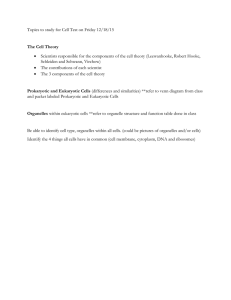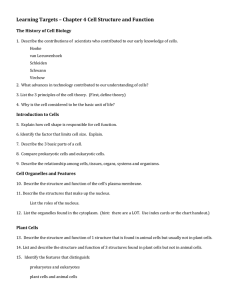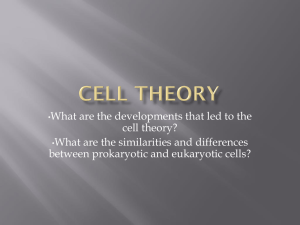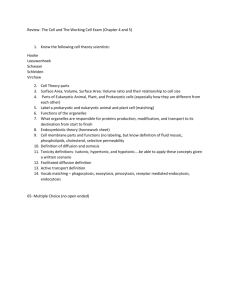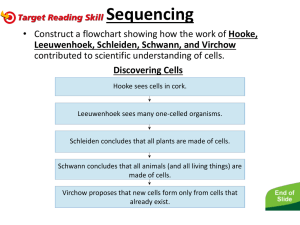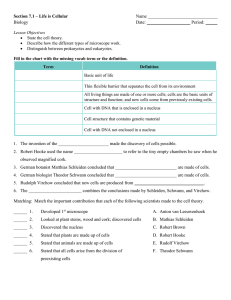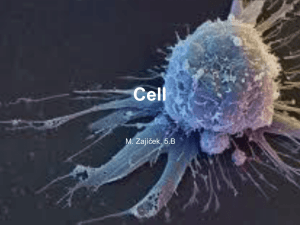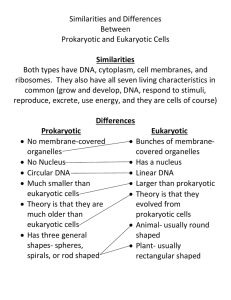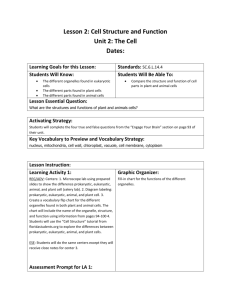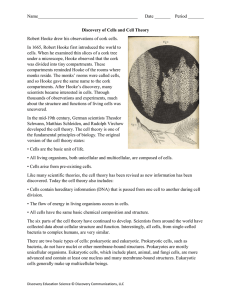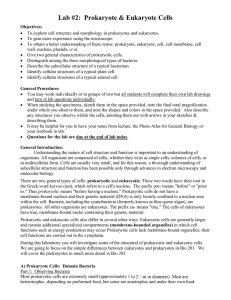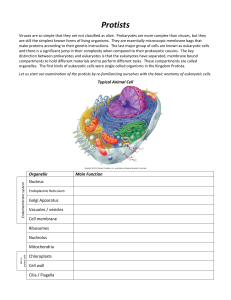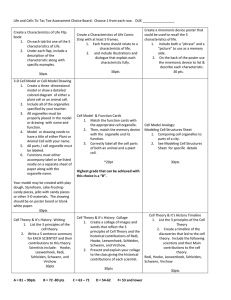cell
advertisement
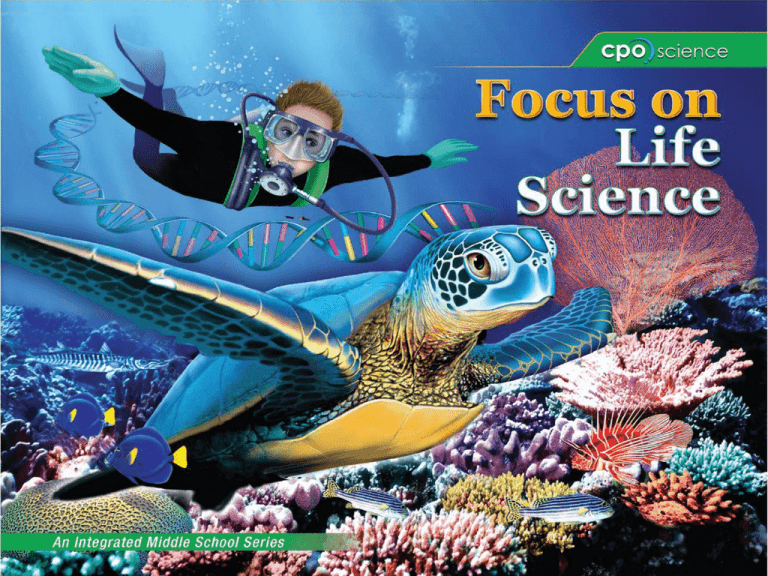
Chapter 5: Cell Structure and Function What are cells? • A cell is the basic unit of structure and function in a living thing. • Your body is composed of billions of cells. • You have nerve cells, skin cells, muscle cells, blood cells, and many other types as well. Examples of cells in body Are cells alive? • Each cell in your body shares the characteristics of all living things. Who first viewed cells? • English scientist Robert Hooke (1635–1703) was the first to record his observations of cells. • In 1663, he took a thin slice of cork and placed it under a microscope that he built himself. Who was Anton van Leeuwenhoek? • Dutch craftsman who made lenses • 1632-1723 • With his lenses he was the first to observe single-celled protists, blood cells, and bacteria Who are Matthais Schleiden & Theodore Schwann? • German scientists • 1839 they viewed plant & animal tissues under a microscope • They concluded all plants & animals are made of cells What is the cell theory? • The work of Hooke, Leeuwenhoek, Schleiden, Schwann, Virchow, and others led to an important theory in life science. • The cell theory explains the relationship between cells and living things. Are all cells the same? • All cells share certain common characteristics. • But, in many-celled organisms like you, specialized cells have specific jobs to do. What are the characteristics of ALL cells? 1. All cells are surrounded by a cell membrane. 2. All cells contain organelles. 3. All cells contain cytoplasm. 4. All cells contain DNA. What are Prokaryotic cells? • Prokaryotic cells do not have a nucleus. • Scientists believe that all life on Earth came from ancient cells of this type. • Only bacteria have this type of cell. What are Eukaryotic cells? • Eukaryotic cells have a nucleus and membranecovered organelles. • They tend to be about ten times larger than prokaryotic cells. • Animals, plants, fungi, and protists all have eukaryotic cells. Comparing cell types
